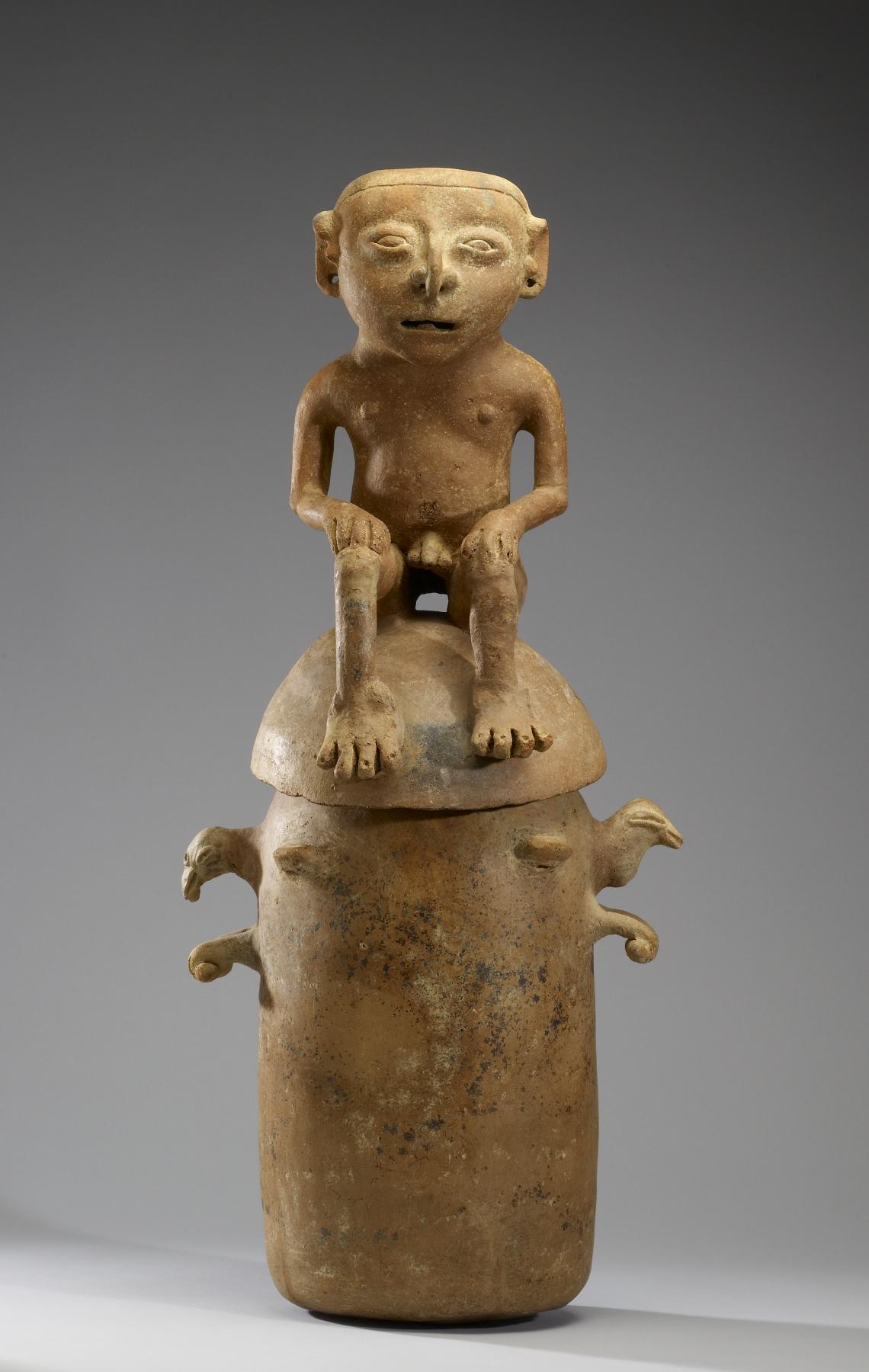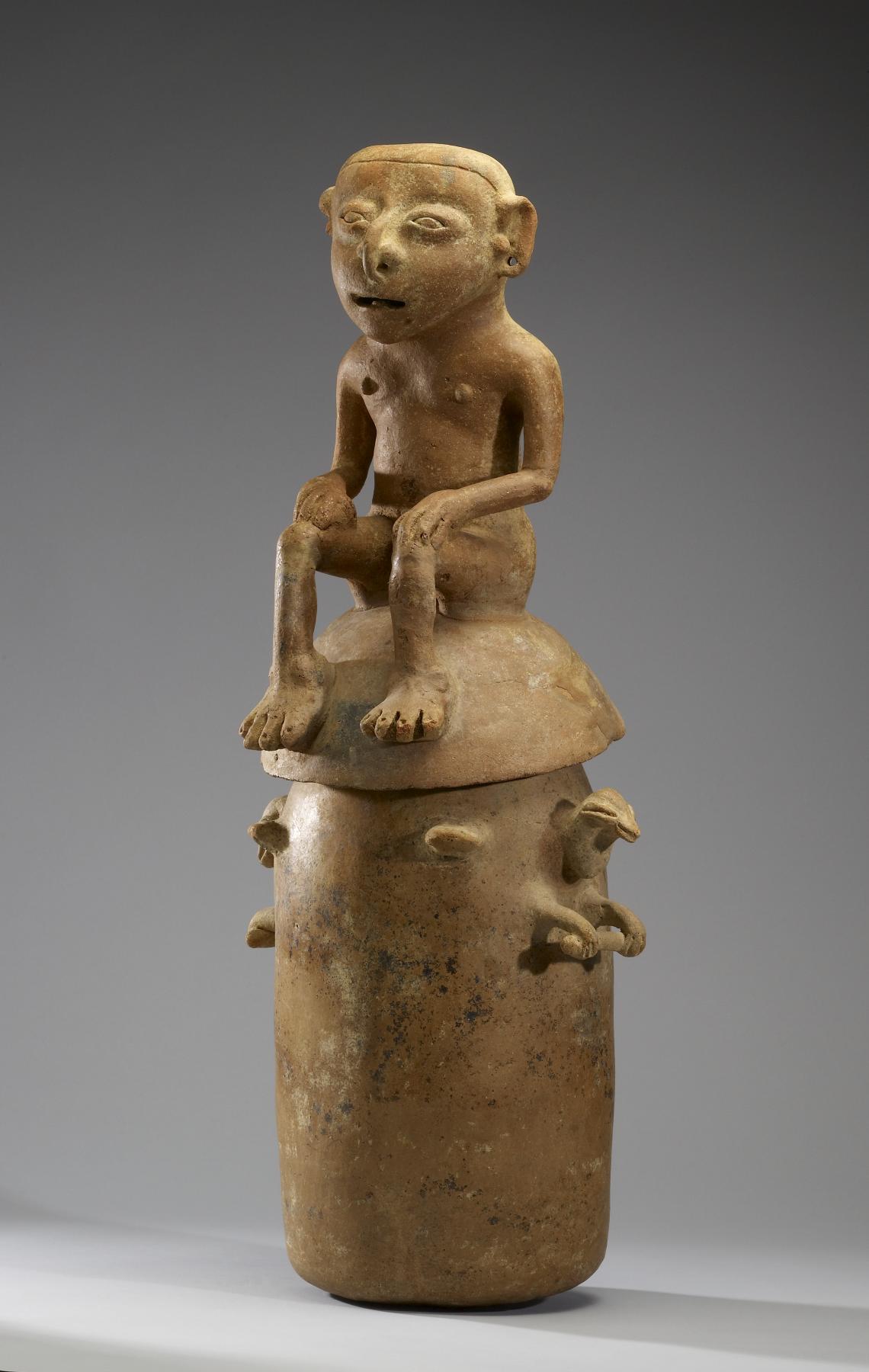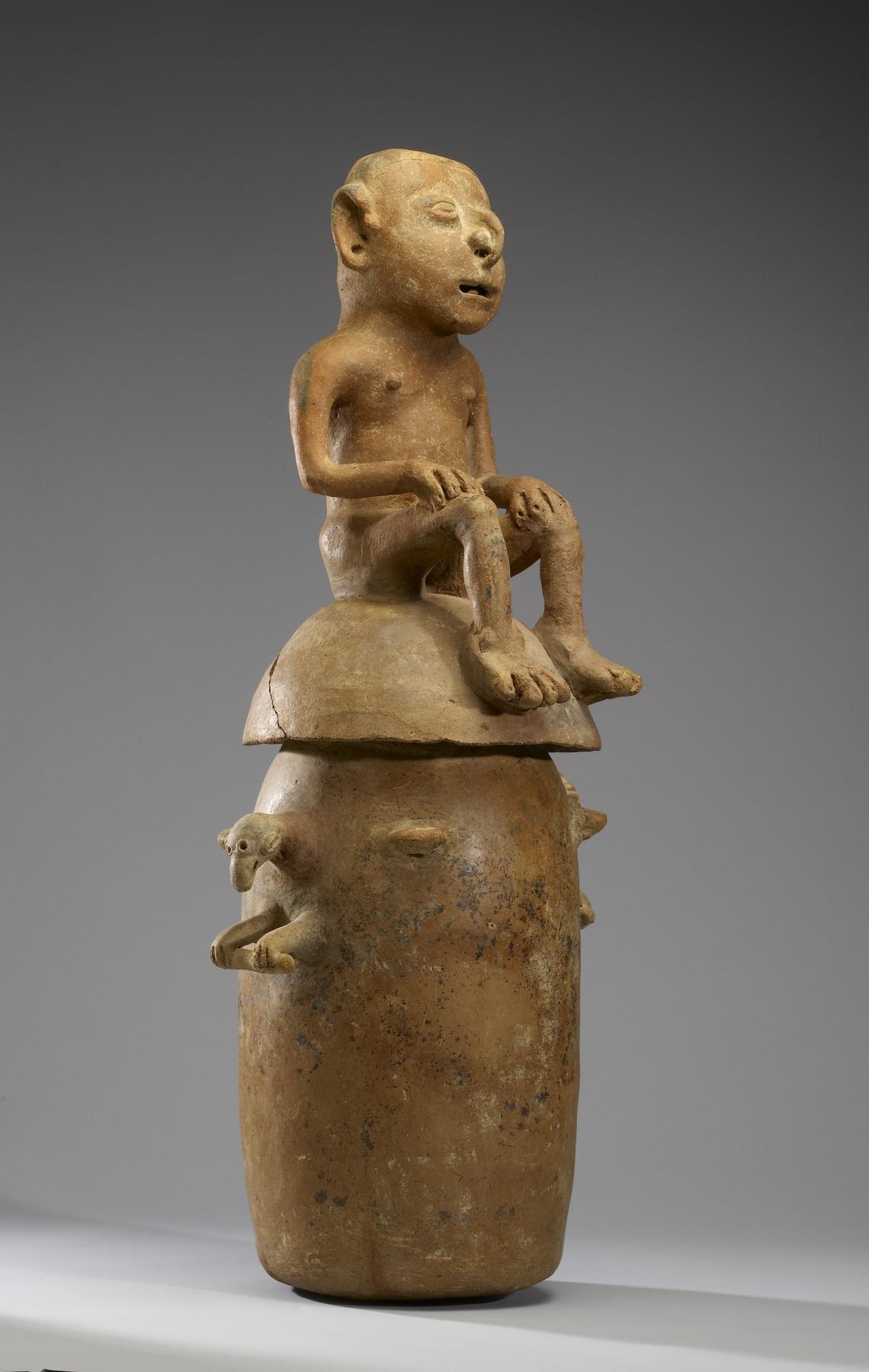Burial Urn
(Ancient Americas )
The burial-urn style of the lower Magdalena River region of northern Colombia is renowned for its figural portrayals of a male personage sitting atop a low bench that adorn the urns' lids. Often birds, as totemic or otherwise symbolic icons, embellish the urns' sides. The modeled male figure atop the lid typically is portrayed nude, although occasionally he may be ornamented with a necklace or other body decoration. Here, the pierced earlobes indicate that the figure originally wore some type of ear ornament. The ornamentation of burial urns with all manner of modeled embellishments, be they figural or more abstract, recalls the sixteenth-century Spanish chronicler Pedro de Aguado, who described the bones and ashes of a cremated chief having been placed in a clay vessel that then was garnished with jewels and other finery.
Provenance
Provenance (from the French provenir, 'to come from/forth') is the chronology of the ownership, custody, or location of a historical object. Learn more about provenance at the Walters.
Ron Messick Fine Arts, Santa Fe, New Mexico [date and mode of acquisition unknown]; John G. Bourne, February 5, 1998, by purchase.
Exhibitions
| 2012-2013 | Exploring Art of the Ancient Americas: The John Bourne Collection Gift. The Walters Art Museum, Baltimore; Frist Center for the Visual Arts, Nashville. |
Geographies
Colombia, Magdalena River (Place of Origin)
Measurements
H: 29 5/16 x W: 12 15/16 x D: 10 1/4 in. (74.4 x 32.9 x 26 cm)
Credit Line
Gift of John G. Bourne, 2014
Location in Museum
Not on view
Accession Number
In libraries, galleries, museums, and archives, an accession number is a unique identifier assigned to each object in the collection.
In libraries, galleries, museums, and archives, an accession number is a unique identifier assigned to each object in the collection.
2009.20.215








